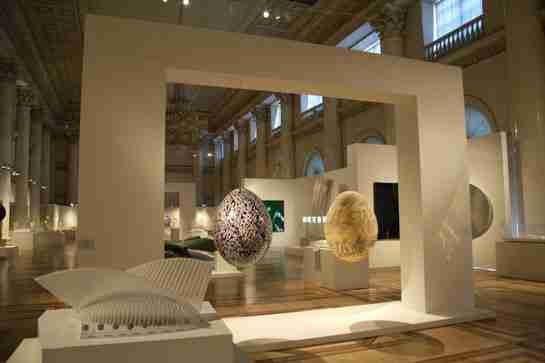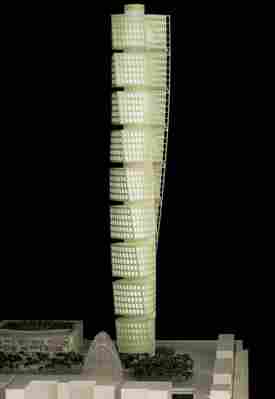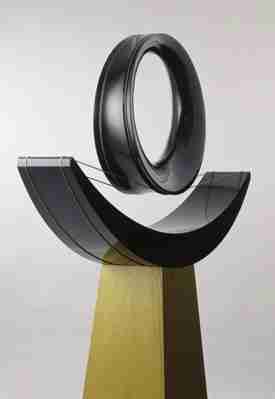Santiago Calatrava is known for designing soaring bridges, anthropomorphic towers, and dramatically vaulting transportation buildings, typically characterized by bold, sculptural forms such as winglike expanses that appear ready for flight. However, in addition to being an architect and engineer, Calatrava is a prolific sculptor, draftsman, and painter, and his creations have been exhibited around the world.

The most extensive show of his work yet, “Santiago Calatrava: The Quest for Movement,” has just opened at the State Hermitage Museum in St. Petersburg, Russia. Spanning his entire 30-year career, the exhibition features architectural models and drawings, as well as never-before-seen paintings and sculptures. It’s the Hermitage’s first-ever solo presentation of a living architect’s work—part of its 20/21 project, an initiative aimed at bringing more contemporary art and design to the city.

The show highlights signature structures like Calatrava’s Turning Torso in Malmö, Sweden, completed in 2005 and still the tallest building in Scandinavia, and Jerusalem’s controversial Chords Bridge, inaugurated in 2008. Four large projections showing railway stations, bridges, and other projects attempt to convey the scale and dynamism of the architect’s structures.

“The Quest for Movement” refers to the kinetic quality inherent in much of Calatrava’s work, which occasionally includes actual moving parts, the most famous example being the mechanized brise-soleil he created for his Milwaukee Art Museum building. A scale model of his World Trade Center Transportation Hub for New York City, currently under construction, is presented alongside his painting of a pale bird being released into the air—illustrating how the hub’s retractable glass-and-steel wings were inspired by this simple, stirring movement in nature.
“Santiago Calatrava: The Quest for Movement” remains on view at the State Hermitage Museum in St. Petersburg through September 30; hermitagemuseumrg
Also check out AD’s coverage of Calatrava’s Margaret Hunt Hill Bridge in Dallas and his pedestrian Sundial Bridge in Redding, California .
